Have you found it tough to buy your first investment property? If so, this article is written specifically for you. I will share 6 real examples of how new investors bought their first investment properties. The common theme with all 6 examples is that they used their home (aka principal residence) to help them get started.
As you’ll see, this approach of buying a home that can also be an investment makes the process much easier. The property is usually easier to find because you know where you want to live. It’s also much easier to finance than typical investments. And owner-occupant loan programs often have lower down payment requirements.
And probably the best part, the first deal is only the beginning. This first investment property will help you learn and keep moving forward so that the next deals are even easier.
But before we get into the case studies, let’s look at what buying your first investment property as your principal residence actually means.
3 Ways to Buy Your First Investment Property As Your Home
I’m a big fan of not wasting your money on a dream house early in your life. A big home in a nice neighborhood may be comfortable, but it’s not usually a great investment compared with better options like:
- House Hacking
- Live-In-Then-Rent
- Live-In Flips
These three methods are what the people featured in this article used to buy their first investment property as their home. I’ll briefly explain each strategy below.
House Hacking
This strategy involves buying and living in a property with extra rentable units. This could be a small multi-unit apartment building (2, 3, or 4-plex). Or it could also be a house with a rentable accessory dwelling unit (basement apartment, garage apartment, or guest house). And many people are now using Airbnb and similar sites to make money renting spare bedrooms.
The common theme with any variations of house hacking is that you generate rental income from your residence. In the short run, this allows you to live much cheaper (and even free). In the long run, you can eventually move out of the property and keep it as a cash flowing rental.
And because you live in this property, you can typically get the most attractive financing with low interest rates and long amortization periods (ex: 30 years). Owner occupant loans also have some of the lowest down payment requirements, including 0% for veterans who use the VA loan program.
If you’d like to dive deep on how to do house hacking, check out my house hacking guide.
Live-In-Then-Rent
With this strategy, you move into a house and prepare it to eventually be a rental. Later you move out and keep the house as a pure rental property. In a past article, I shared a detailed case study of my own live-in-then-rent.
This strategy is similar to house hacking, except you don’t rent the house while you live there. For those who could never see themselves living near their tenants, this gives you a good alternative. Attractive financing and down payments are similar benefits to house hacking. I also like that you get to know the property well while you live there. You can do repairs and improvements (like installing solid surface floors) that make it lower maintenance when you rent it out.
Live-In Flips
Just as it sounds, a live-in flip is a house you move into that needs work and has potential to increase its value. As you live there, you do repairs (or hire them out). And then later (after 2 years or more) you sell the house for a higher price.
The biggest benefit of the live-in flip strategy is that in the U.S. you get to make a profit tax-free up to $500,000 as a couple who files taxes jointly or $250,000 as a single filer (see IRS info). The main requirement is that you live in the property 2 out of the last 5 years. Other countries like Canada and the UK have similar programs.
Instead of beginning with more risky flips, a live-in flip lets you patiently fix-up a property over at least two years. You get to learn slowly without the pressure of a vacant house and big interest payments. And because you likely are a good judge of where to live, you’ll probably pick a neighborhood that has potential.
Now that you know the 3 primary ways to buy your first investment property as your residence, let’s look at 6 real examples of how investors have used these strategies to do their first deals.
A 26-Year-Old Uses House Hacking For Her First Purchase
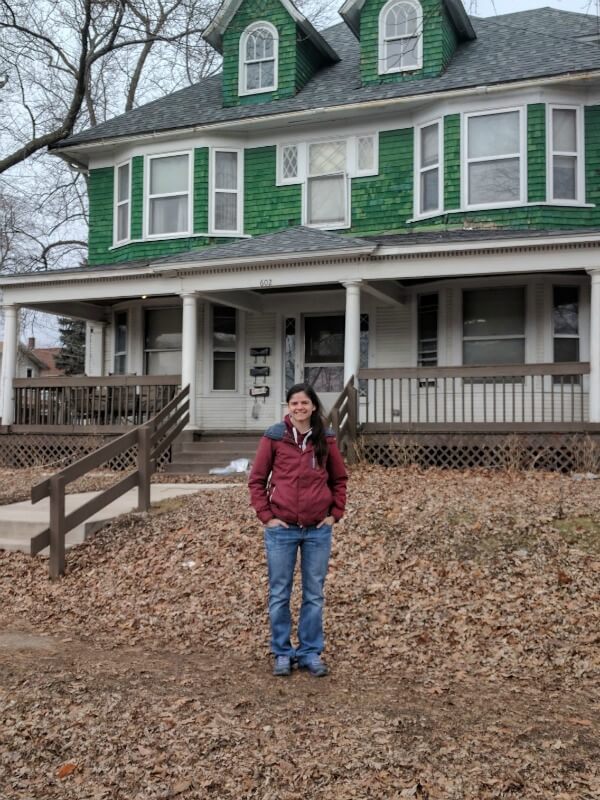
| First Investment Property – Real-Life Example #1 | |
| Name: | Gwen from FieryMillennials.com |
| Location: | Midwestern U.S. |
| Strategy Used: | House Hacking |
| Property Type: | Triplex (historic home) |
| Financing Used: | VA Loan |
| Down Payment: | 10% |
| Purchase Price: | $85,000 |
| Repairs: | $20,000 |
| Gross Monthly Rent: | $1,100 (2 units) or $1,500 (3 units) |
I’ve had the pleasure of meeting Gwen in person at blogging conferences. She writes an awesome blog (see link above) and co-hosts an excellent podcast called FIRE Drill Podcast. I also featured Gwen in an Investor Profile on my site.
Her triplex purchase had good numbers on paper (see details in her rental article). She has had some first investment challenges, particularly with contractors. But she has learned a lot.
Fully rented (when she moves out) it will bring in about $1,500/month. And her expenses of mortgage, taxes, insurance, vacancy, repairs, and management (if she hires a 3rd party) would be about $1,000 per month. So, she’ll have about $500/month in net cash flow as a true rental.
And most importantly, while she’s living there she still gets $1,100/month in rent. And this covers 100% of her operating expenses for the property. So, she can save a lot of money that can be used for improvements, down payment funds for another property, and other investments.
UPDATE: Gwen’s experiment in house hacking did not end as well as she hoped. The property was not in as good of a neighborhood as she thought, so in the end she sold it and moved on. She did learn a lot. You can read more details in this blog post.
A 27-Year-Old in Washington D.C. Uses House Hacking to Get Started in an Expensive Market
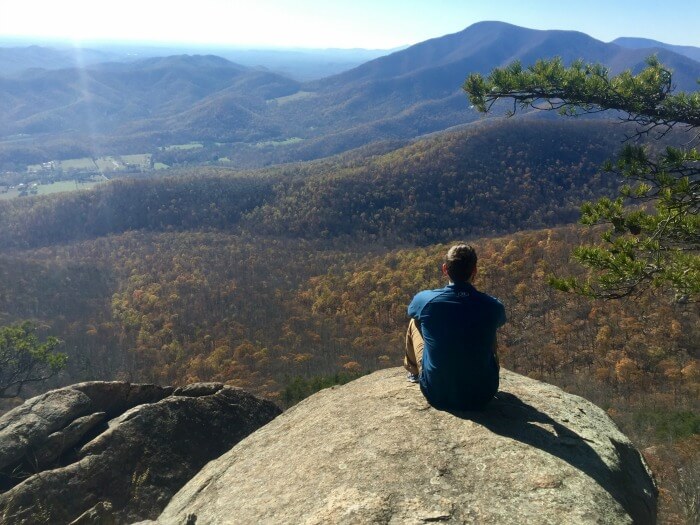
| First Investment Property – Real-Life Example #2 | |
| Name: | GuyonFire.us (he is staying anonymous for now) |
| Location: | Washington D.C. |
| Strategy Used: | House Hacking |
| Property Type: | House – 3 beds, 2 baths |
| Financing Used: | FHA Loan |
| Down Payment: | 3.5% |
| Purchase Price: | $358,800 |
| Gross Monthly Rent: | $1,500 (2 extra bedrooms) or $2,350 (entire house) |
Like Gwen, I got to meet Guy on Fire in person and I’ve talked to him on the phone. I also featured him on my site with an Investor Profile.
I like this case study a lot because it demonstrates that house hacking works even in a high cost of living area. In fact, house hacking may be the only way to get started in some locations with high prices and steep down payment requirements. You can see all the details of his first house in this article on his site.
This is also an interesting variation because he did what I wish more 20-something first time home buyers would do. He kept living like a college student instead of elevating his cost of living! He brought in two roommates to rent his spare bedrooms. And as a result, he lived in a $358,000 house for less than $500/month out of pocket. The cheapest rent he could find for an apartment was $1,500 per month, so he was doing much better AND owning a long-term investment.
A 30-Something Engineer Leases-Options a Multi-Unit Apartment Until He Can Sell His Home For a Down Payment
| First Investment Property – Real-Life Example #3 | |
| Name: | Kyle Corbin |
| Location: | Spartanburg, South Carolina |
| Strategy Used: | House Hacking |
| Property Type: | 4 plex + duplex |
| Financing Used: | (original) Lease Option from seller
(after 1 year) Conventional mortgage |
| Down Payment: | (option deposit) $8,400
(down payment – including credit for option deposit) 25% or $67,500 |
| Purchase Price: | $267,900 |
| Gross Monthly Rent: | $3,000 (5 of 6 units rented) or $3,600 (all 6 rented) |
I got to know Kyle well because he did 1-1 coaching with me as he negotiated and bought this deal. It’s a little more creative than your typical first deal. But solving the puzzle of a deal using creativity is one of my specialties, and Kyle did a great job negotiating and bringing his own creativity and hard work into the deal.
The challenge was that Kyle did not have $67,500 sitting around for a down payment. But he did have equity in his current house and a 401k plan that he could borrow from (short-term). So, we asked the owner if he’d lease the entire building to Kyle and give him an option to buy it. This would give Kyle time to fix up and sell his house to free up cash for a down payment. And it also would allow Kyle to move into one of the units so he could fix up his house and get it ready to sell.
After some back and forth negotiations, the seller eventually said yes. Kyle got what’s called a master lease. This means he pays one set rent amount to the owner for the entire property, and he then subleases all the other units to the tenants. Hopefully, there is a profit spread between the two. And in this case, Kyle also lived in one of the 6 units.
As with most deals, the path wasn’t all smooth or easy. But Kyle pulled it off. And since then he’s purchased several more rentals. You can see all the details of the deal and Kyle’s progress as an investor in my Investor Profile of him on my site.
A Couple Rented Their City Home & Moved to Their Ideal Rural Homestead
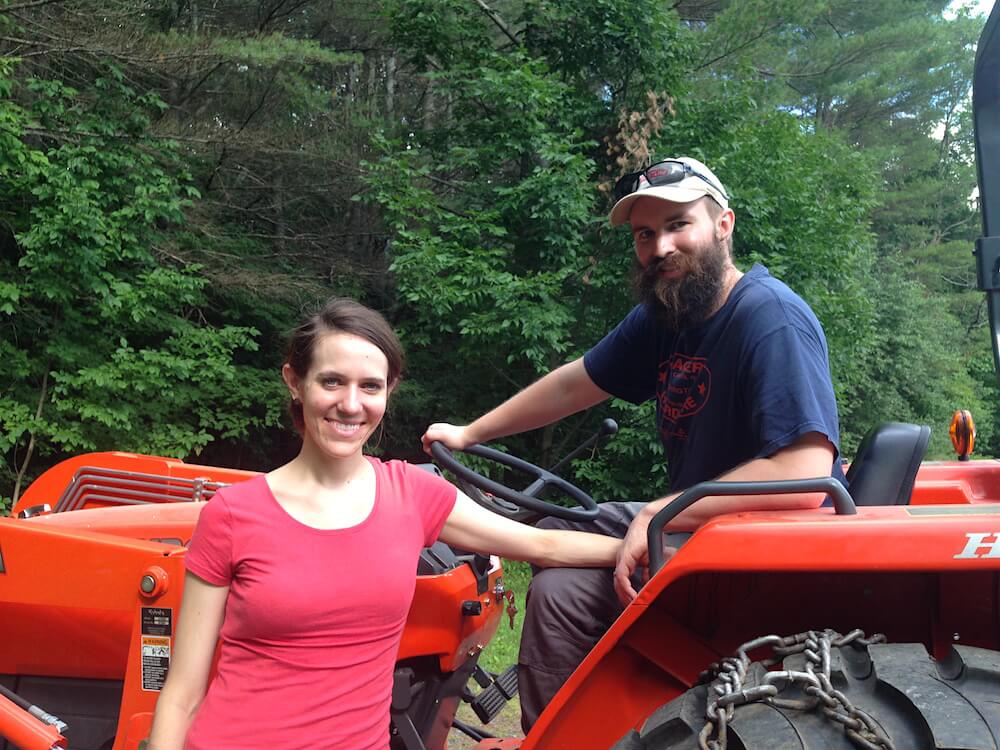
| First Investment Property – Real-Life Example #4 | |
| Name: | Liz and Nate Thames (i.e. The Frugalwoods) |
| Location: | Cambridge, Massachusetts (originally) & rural Vermont (now) |
| Strategy Used: | Live-In-Then-Rent |
| Property Type: | Single Family House |
| Financing Used: | Conventional Loan |
| Down Payment: | $65,000 (~14%) |
| Purchase Price: | $460,000 |
| Gross Monthly Rent: | $4,400 |
I can’t claim any kind of involvement in Liz and Nate’s awesome story. I’m just an admirer of their philosophy and their blog at frugalwoods.com. Liz writes with the clarity, humor, and control I can only hope to obtain one day. In fact, she is about to publish her first book, Meet the Frugalwoods: Achieving Financial Independence Through Simple Living. Like the blog, the book is about their personal story. But it’s also about frugal, simple living as a path not only to financial independence but also to happiness and a meaningful life (my kind of topic!).
Liz and Nate bought their house in an excellent location .5 mile from MIT and 1 mile from Harvard University (details of their purchase). And they also bought at the right time in 2012, right before the market heated up and prices shot back up.
From the beginning, they knew this house would likely become a rental some day. So, in addition to cosmetic improvements they did other repairs to make it a solid rental. They also secured an owner occupant, 3.8% interest, long-term mortgage. This kept their biggest cost (principal and interest) low so that they generate well over $25,000 per year in cash flow now that it’s rented.
You can see all their financial details in their rental finances post. This live-in-then-rent house, other investments, and a frugal (but happy) style of living has allowed them to become financially independent at a young age.
A New York City Couple Rented Their Condo Residence to Begin a Rental Portfolio
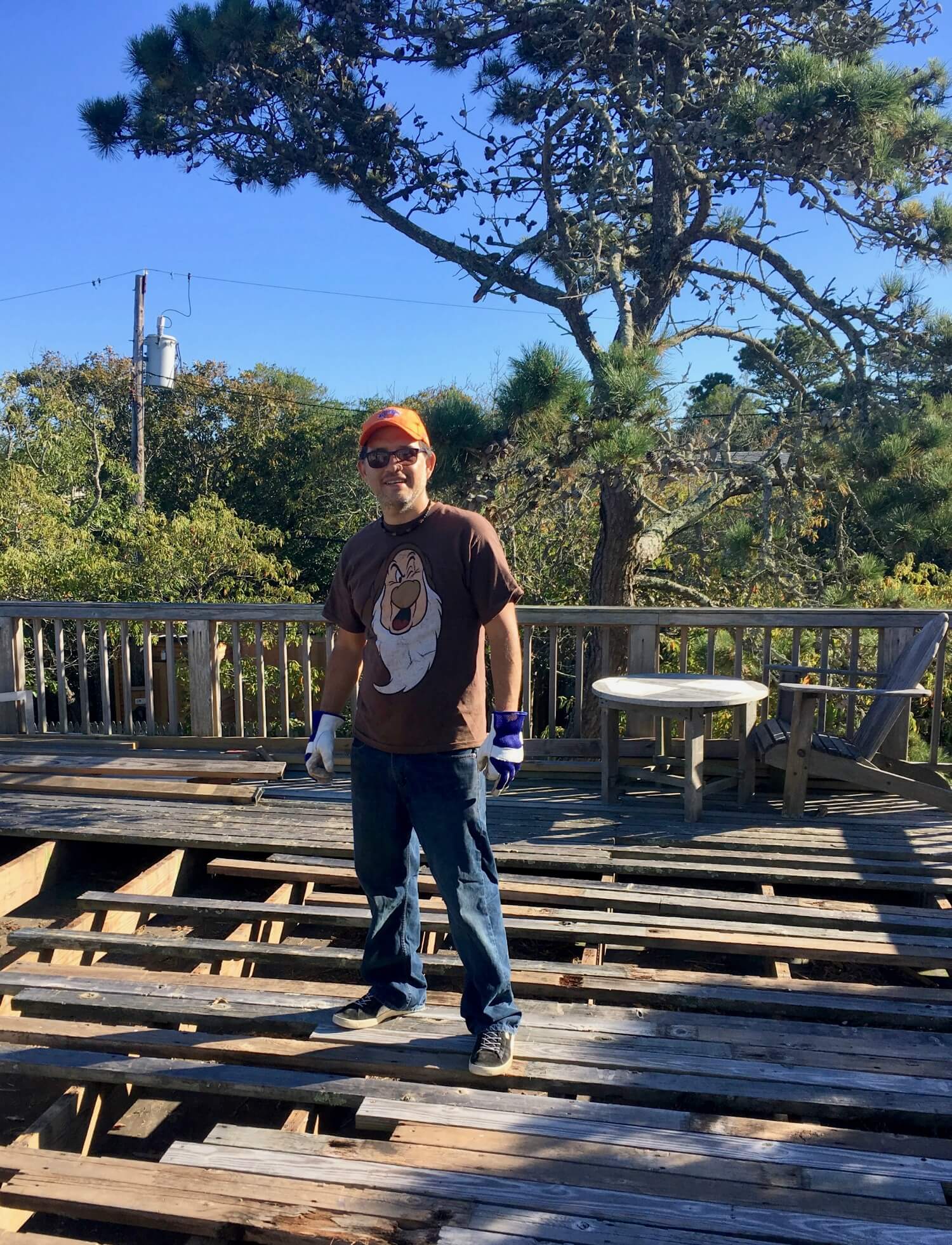
| First Investment Property – Real-Life Example #5 | |
| Name: | Mauricio Rubio |
| Location: | New York, New York |
| Strategy Used: | Live-In-Then-Rent |
| Property Type: | Condo |
| Financing Used: | Conventional Loan |
| Down Payment: | $202,500 |
| Purchase Price: | $405,000 |
| Gross Monthly Rent: | $1,950 (originally)
$2,800 (10 years later) |
Mauricio and I have a lot in common. First, we both love real estate investing (obviously). And second, we both traveled with our families on a long-term sabbatical-style trip to Cuenca, Ecuador. They just did their trip a year before ours.
But my real estate market in a small university town in the southern US is VERY different from his condo market in Manhattan in New York City! But similar strategies can work in different markets if you adjust how you apply them.
This condo bought my Mauricio and his partner was their first deal. Mauricio’s partner sold her property in another country to free up cash for the down payment. It was a residence for 5 years, and then once their family grew, they moved out and rented it. They have since bought other properties, and the combined cash flow has allowed them to reach financial independence.
Mauricio’s newest niche is vacation rentals, which you can read about in his Investor Profile on my site.
A Colorado Couple Flipped Their Residences on the Way to an Early Retirement
| First Investment Property – Real-Life Example #6 | |
| Name: | Carl & Mindy from 1500days.com |
| Location: | Longmont, Colorado |
| Strategy Used: | Live-In Flip |
| Property Type: | Condos & Single Family Houses |
| Financing Used: | Conventional Loans |
| Down Payment: | various |
| Purchase Price: | various |
Carl and Mindy are blogging friends of mine. They got into real estate investing by first flipping 5 of their residences (aka Live-In Flips) for a total of over $400,000 in profit! This real estate wealth was reinvested and snowballed into a net worth of over 1.89 million at age 43 when they reached financial independence.
Neither Carl nor Mindy had backgrounds in remodeling. They just read books and watched a lot of YouTube to learn as they went. They have told me that at times it wasn’t easy because a lot of weekends and nights were spent fixing up the house. But in the end, they are happy they did it.
Their first flip was actually Mindy’s condo when they first got married. She moved into Carl’s house, and they decided to sell the condo. But it needed work. So, they fixed it up, sold it, and got hooked on the process!
Carl shares a lot of live-in-flip details in a guest post called Getting Rich With the Live-In House Flip. I also highly recommend their blog at 1500days.com. It’s one of my favorites for funny, practical, and down-to-earth advice on finances and life.
Will You Be the Next First Investment Property Example?
I hope these examples of how to buy your first investment property have been helpful. As you can see, no two stories start the same. You have to adapt general strategies and apply them to your market and your situation.
I also hope you’ll consider using one of the 3 investing strategies I explained in this article. Turning your home into an investment is one of the easiest and safest ways to get started in real estate investing.
And if you do have success, please let me know! I’d love to share your story as inspiration for others trying to buy their first property.
Have you used your home as an investment? Which strategy did you use? Did it help you get the rest of your real estate investing business rolling? I’d love to hear from you in the comments below.
Get My Free Real Estate Investing Toolkit!
Enter your email address and click "Get Toolkit"
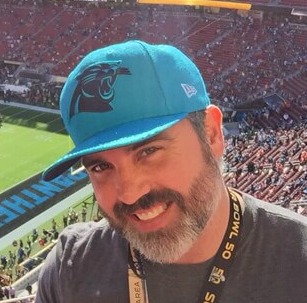
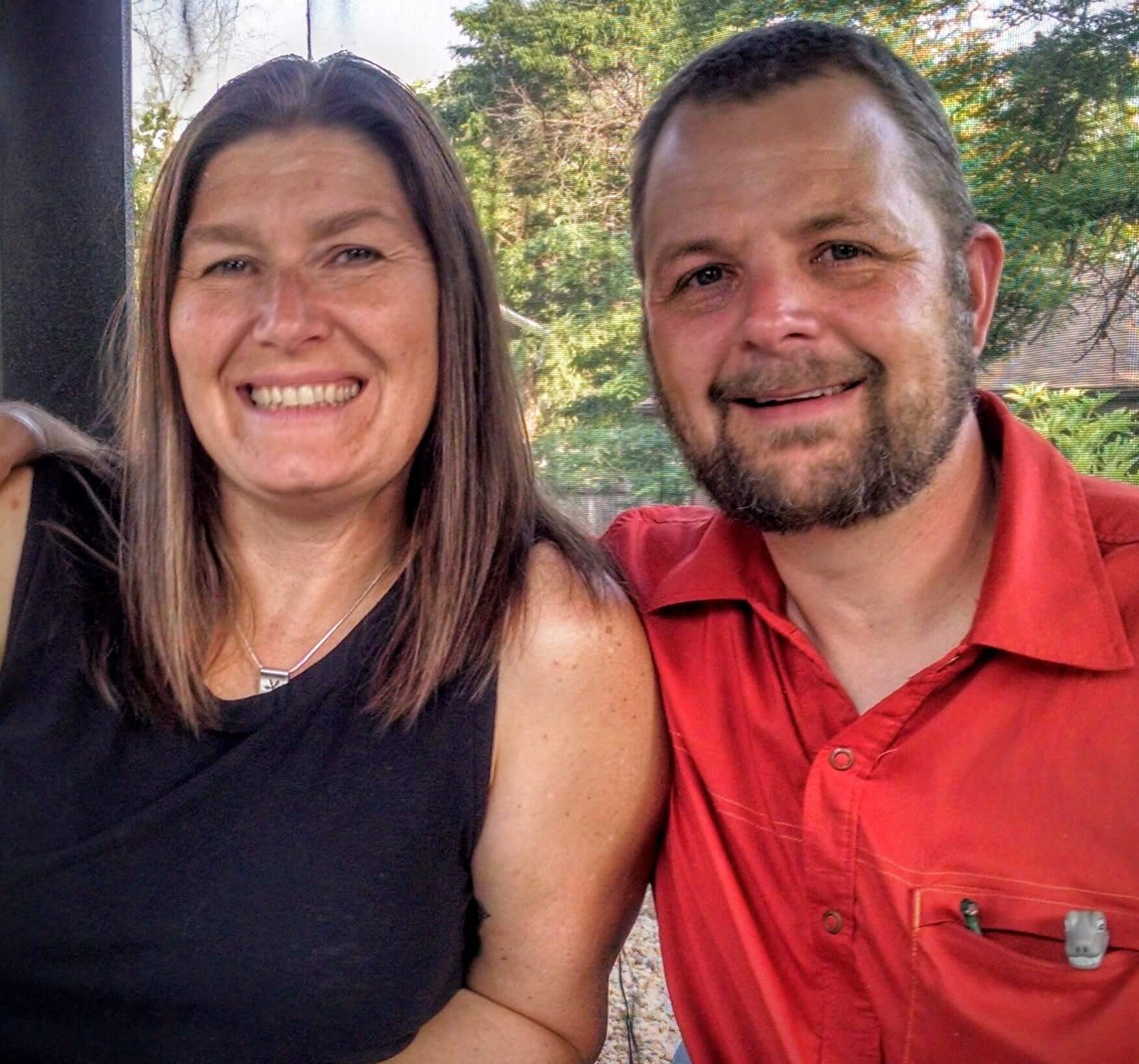
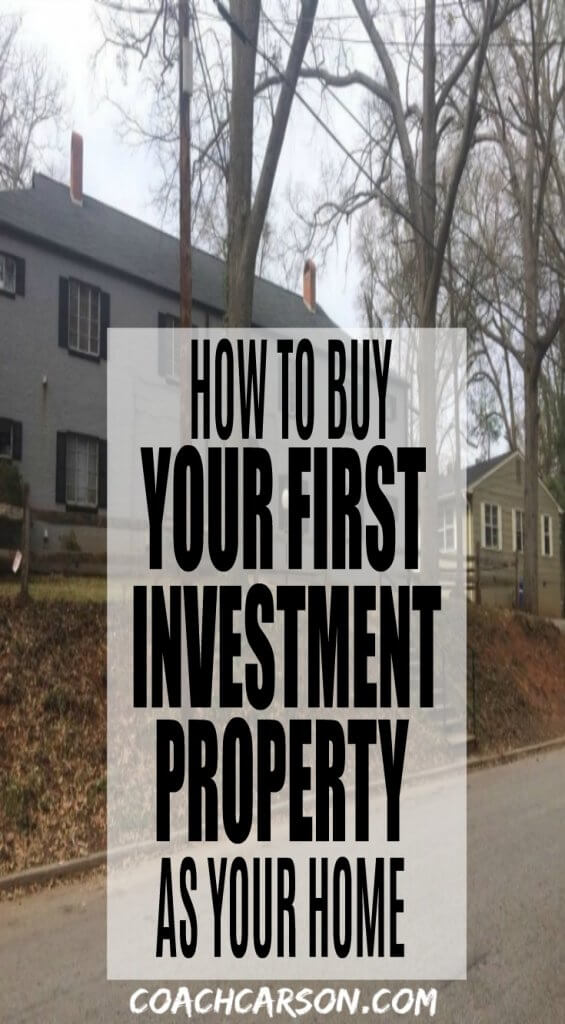
Chad,
I love the way you give specific examples. I always thought that real estate sounded great, but it is a big hurdle to get over to actually get into the game.
In my case, we bought our future retirement home across the country a year before we were ready to move in with the intention of renting only for one year as an experiment to dip our toes in the water. It has been awesome to see how much this investment has boosted our bottom line, while simultaneously giving us a large paper loss to write off on our taxes in our final year as a two income family. It also has allowed us to see how passive an investment real estate can be by using a property manager on the other side of the country.
Your concept of house hacking also played into our decision. We have a mother in law suite in the house we bought that we may use as an Air B&B during tourist seasons when we can charge a premium, giving us ongoing income and a business to write off expenses against. It also allows us to afford a larger home than we would have otherwise purchased so we can host friends and family when we want.
Seeing all of the different ways you can apply the lessons of others really sparked my creativity and curiosity and pushed me to take action. Thanks for doing what you do!
I love your story about getting into real estate, Chris. It’s such a helpful tool in early retirement or life transitions, and I’m glad the info here has been at least a small part of your progress.
We hope to come visit that new house if we can get out west this year!
Great article Chad! It’s really helpful to see all of the different examples broken down.
I started with the Live-In-Then-Rent approach myself. But it wasn’t so much of a strategy as it was necessary. I had to move out of the country for my job but couldn’t sell my condo during the housing crash so I rented it out instead. The “Accidental Rental” approach I guess.
I’ve been a landlord ever since and have even expanded my portfolio. Looking back, I’m glad it happened because it has worked so well for me.
Thanks for sharing these case studies!
I’m loving all of your articles, Chad! My boyfriend and I just bought our first house and we are remodeling over the next couple years. Super beginners but I am hoping to keep this as a rental and then buy a duplex or other multi-family so we can do the house hacking plan and then continue until we have about 5-6 houses as a good base.
Our biggest hurdle will be that we are in Denver, where even BAD fixer uppers are still quite expensive and we will probably need the money we make off our first home in order to get another. Do you have any recommendations or articles that might have some tricks (besides saving every cent we can!) to be able to keep this as a rental while also investing in another property? Thanks!!
Congrats on your first house purchase, Courtney! I like your plan of moving from your home to the multiunit.
I have a couple of recommendations for you.
First, check out the BRRRR Strategy (buy, remodel, rent, refinance, repeat) in my article on getting started with little or no money (https://www.coachcarson.com/little-or-no-money/#10). If your current house has equity and the rent can support it, that may be a way to get a down payment for the next one.
Second, Craig Curelop wrote a guest post for me about his house hacking experience in Denver. You may find his numbers interesting. https://www.coachcarson.com/financial-independence-3-years-house-hacking/
Finally, even if you have to sell your current house and use that equity to buy the next one, that can still be a good wealth building move. In the big picture, it’s all about building wealth that you can later use to achieve financial independence. There are many good paths to accomplish that, so as long as you’re moving forward that’s good!
Thanks for reading and best of luck!
It is awesome that Gwen was able to buy a home and make $500/month after expenses. My wife and I are considering making our first home purchase an investment property to help us get some income for a bigger home when we have kids. We may consider reaching out to a professional to help us buy our first home.
I have a situation where I’m no longer in the rental mkt Thank the Lord, I purchased my first 2 flat, my daughter lives on the 1sr flr and I on the 2nd, she won’t pay me any rent, and I’m supplying money for the 1st and 2nd flt utilities, it’s during Covid so the Sheriff’s won’t evict her, I’m repairing and preparing to sell in another year or so, I would say never do business w/ family. In spite of it all I’m gonna win. I just hate I’m carrying the entire property, this unit was suppose to bring in at least $550.00 which is what my daughter gave me her word she would do, that was a lie so if I keep it she stays here for free. I’m gonna fix and sell. That’s the only way I can get my money out and move on. Lesson Learned.